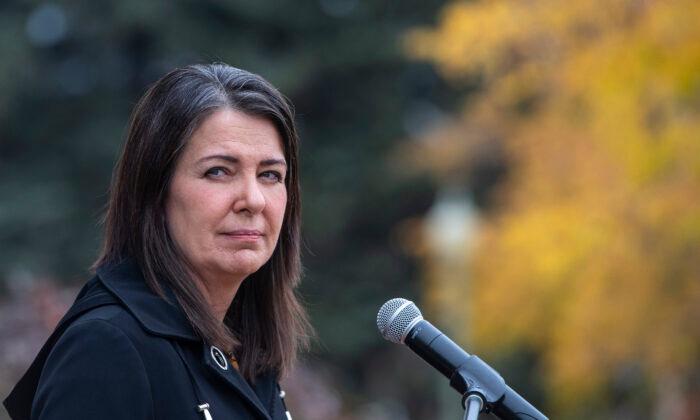Alberta Premier Danielle Smith announced Thursday that the Alberta Health Services (AHS) board has been replaced with a full-time experienced administrator, who previously held the role, to make immediate changes to the health care system.
Smith identified four urgent priorities for the new AHS boss, including improved EMS response times; decreasing emergency room wait times; reducing surgery wait times; and consulting with frontline workers and others to implement long-term reforms.
Cowell said he spent eight days in hospital in February after taking a bad fall and suffering a serious fracture of his left leg. He said he “didn’t like the experience.”
“That gives you a brand new, fresh perspective of what it’s like to be in the gurney, in the bed, in the ER.“ He said as he lay in the mud, getting hypothermia waiting for the ambulance, he was thinking, ”Am I going to get help soon? And what’s it going to look like? And how fast am I going to get into proper care?”
Cowell said he knew from experience that Albertans want good care, when they need it, and on time.
Albertans Wait for Care
Smith said the province has to provide “world-class health care when Albertans need it,” after decades of known deficits in the health care system and few improvements.“Patients are waiting too long to access our health care system, despite the excellent work of doctors and nurses, paramedics, and other frontline staff. Albertans are waiting for ambulances. They’re waiting to be admitted to the emergency department. They’re waiting for surgery. They’re waiting to get an appointment with a family doctor. And quite frankly, they can’t wait any longer,” said the premier.
Minister of Health Jason Copping said the 12-person AHS board had to go to make changes faster. “We need a temporary change in governance to support that.” He said the key was a full-time administrator to work directly with AHS to drive change, rather than the previous part-time strategic board.
The health minister said moving away from board governance was a “temporary fix,” and the board would be restored at a later time.
Ambulances for Emergencies
Alberta will increase surgeries at underutilized hospitals, mainly in rural areas, and at chartered surgical facilities, which will be funded by Alberta Health Care.The government also intends to change the way ambulances are utilized, leaving more resources for emergency calls. Copping said ambulance transfers will be fast-tracked at the emergency room to free up paramedics for urgent calls, and other modes of transportation will be used for non-emergency transfers between facilities. This has already been implemented as a pilot program in Red Deer.
Copping said that EMS dispatch will be empowered “to step down calls from 911 to Healthlink when appropriate.” Paramedics will also be empowered “to use their professional judgement to determine whether a patient needs to be transferred to the ER by ambulance.”
He said hospitals needed to “discharge patients sooner ... If someone can move and be supported with home care, or move to long term care, this is beneficial to patients and will ease pressures in acute care.”
More Staff in Emergency Rooms
The government also said it intends to bring more health professionals, such as nurse practitioners and paramedics, into emergency rooms. Copping said, “This will improve the flow in an ER so that patients will be triaged faster.”He said Albertans can wait in the double digits for help at an emergency room, even though the province “actually [doesn’t] have a deficit of ER doctors.”
“It frankly is not acceptable.”
Cowell was previously the administrator of AHS in 2013, the president and CEO of the Worker’s Compensation Board of Alberta, and chief executive officer for the Health Quality Council of Alberta, where he authored a number of scathing reports criticizing the health care system. He was also a professor for more than 30 years at the University of Calgary in the Department of Community Health Services.





